Sale, Kunsthaus Lempertz, Cologne, Germany, November 25, 2000, lot 1264a; sale, Sotheby’s, London, April 26, 2001, lot 18; Edwin L. Weisl, Jr. (1929–2005), New York; sale, Christie’s, New York, April 6, 2006, lot 32; Richard L. Feigen (1930–2021), New York, 2006
The panel support, of a vertical wood grain, has been thinned to 5 millimeters but is not cradled. The removal of an engaged frame has exposed the wood of the panel in the upper-left corner. The right edge of the panel has been cropped, leaving only the tips of the punched arcade visible, and no punching is visible along the left vertical edge, which may be presumed to have been cropped even further within the picture field. A vertical split in the panel has provoked small losses of gilding in the Virgin’s halo to the left of her cheek and above her head. Retouching of these losses has discolored, as have small fills covering minor losses at the top and bottom edges of the panel. The paint surface is in excellent condition, with the red glazes on the Virgin’s dress intact. Flaking losses in her blue robe at her left shoulder, breast, arm, and hip reveal that the robe was painted atop the completed red dress; these losses were lightly touched out with watercolor sometime between 2001 and 2010. Where the blue is not painted over the dress—along the right shoulder and arm, the back profile on both sides, and through the cowl—it is preserved largely intact.
This delicate panel was unknown before its appearance at public auction in Cologne, Germany, in 2000, catalogued as “Tuscan Master, ca. 1400,” and in London in 2001, catalogued as “Follower of Lorenzo di Bicci.” It was first recognized by Pia Palladino, at the time of the London sale of 2001, as an early work by Giovanni di Paolo. Based on its size, shape, the tooling of its gold ground, and the luminous glazing of the Virgin’s red draperies, Palladino associated it with a related panel of the Annunciatory Angel in the collection of the Musée du Petit Palais in Avignon, France (fig. 1). The Avignon Angel, which measures 13 by 10 centimeters, was identified by Federico Zeri as the pinnacle to the left wing of a portable triptych, where it would have surmounted a half-length figure of Saint James Major, now in the Perkins Collection at the Museo del Tesoro della Basilica di San Francesco, Assisi (fig. 2).1 Zeri cited a similar figure of Saint Christopher (fig. 3), last recorded in the collection of M. Moratilla in Paris, as a fragment of the corresponding right wing of the triptych.2 Both the Saint James and the Saint Christopher have been cut to their present sizes (15.2 × 11.5 cm and 16 × 13 cm, respectively) from full-length figures, which were probably shown standing on tiled or marbleized pavements and beneath ogival or trilobe arches of pastiglia lined with punched decoration along the margins of the gold ground. Allowing for completion of these arches and of the truncated gables of the Avignon Angel and the Yale Virgin, an original height for the complete wings may be estimated at between 55 and 60 centimeters and a width at approximately 13 to 15 centimeters (the right wing may have been as much as 2 centimeters wider than the left, a difference not infrequently encountered between the wings of intact fifteenth-century triptychs). The missing center panel would then have measured between 50 and 60 centimeters in height and probably 26 to 28 centimeters in width, and it probably represented either the Crucifixion or the Virgin and Child. Comparable complete triptychs from Giovanni di Paolo’s early career are to be found at the Los Angeles County Museum of Art3 and formerly at the Kimbell Art Museum, Fort Worth, Texas.4
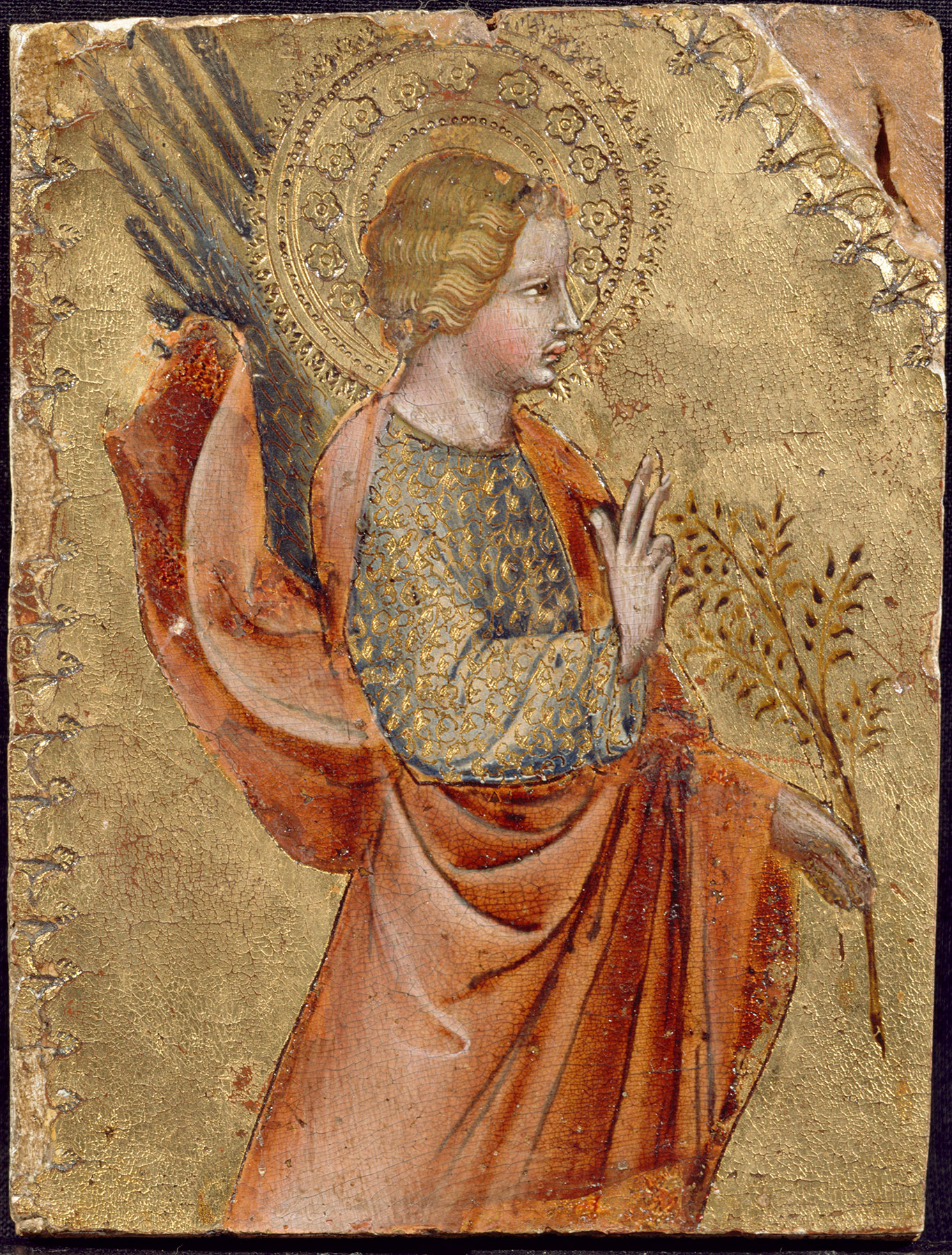
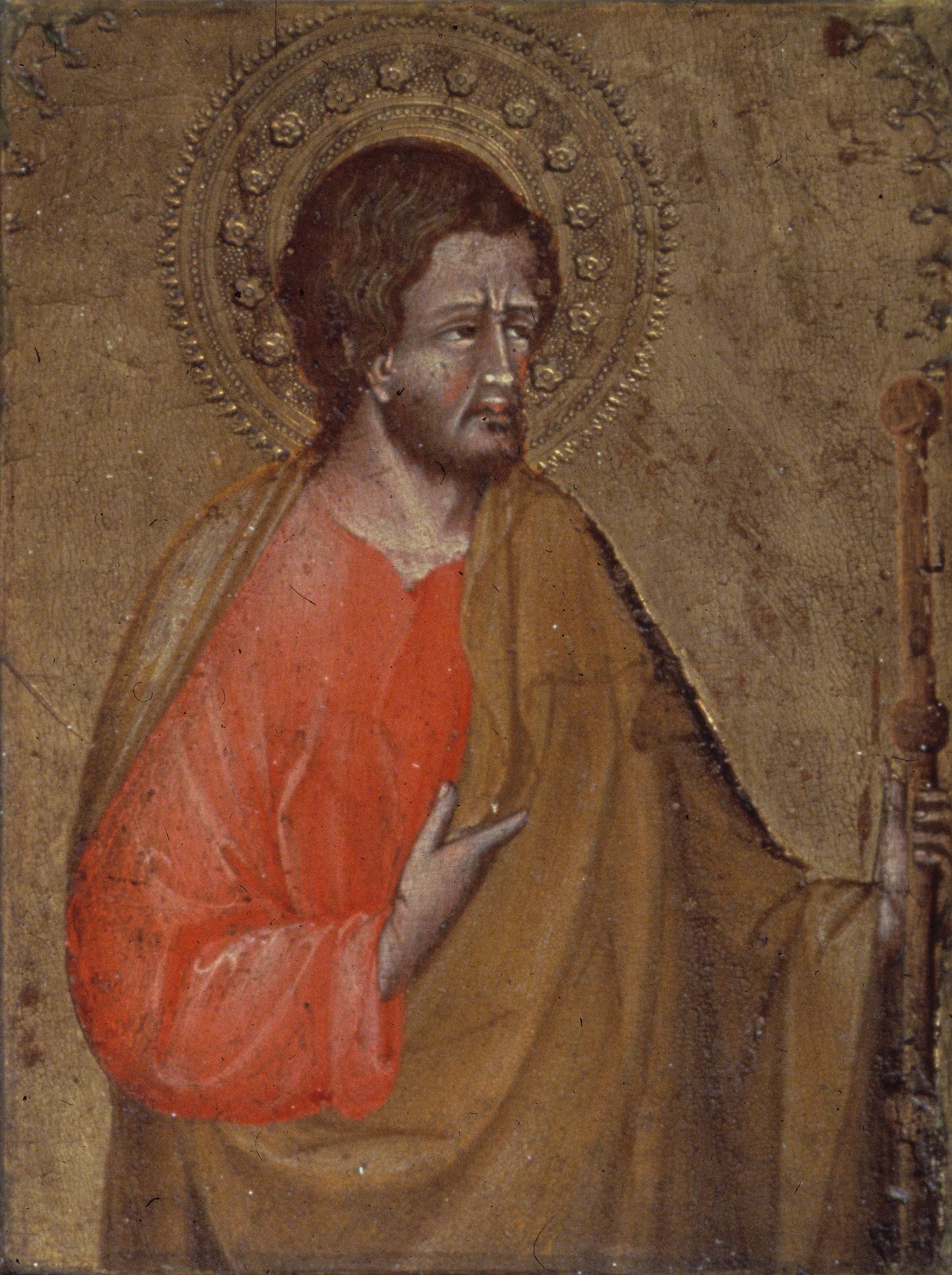
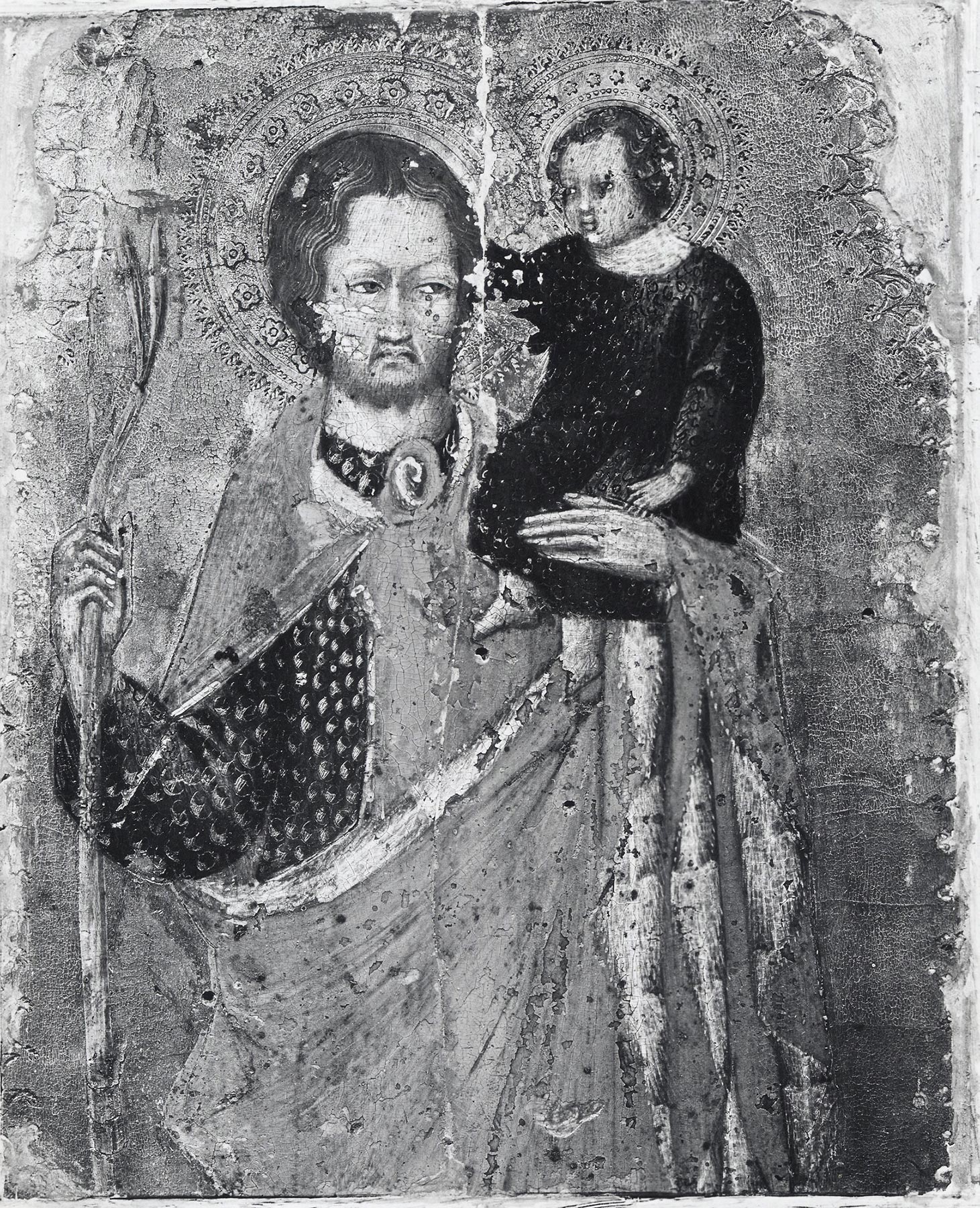
No likely candidates for the missing center panel had been identified among the surviving early works of Giovanni di Paolo until the discovery in 2023 of a previously unpublished panel representing the Virgin of Humility with four angels and, in its tympanum, the Crucifixion (fig. 4). Formerly in the collections of Mrs. A. E. Goodhart and of Robert Lehman in New York, the panel measures 65.1 by 28 centimeters overall, with a picture surface of 52.1 by 23.2 centimeters. Its elaborate tooled decoration and delicate modeling glazes are fully consistent with those in the Yale, Avignon, and Assisi fragments, and its characteristics of style place it close to the beginnings of Giovanni di Paolo’s recognizable career as an artist, again aligned with the Yale, Avignon, and Assisi fragments.
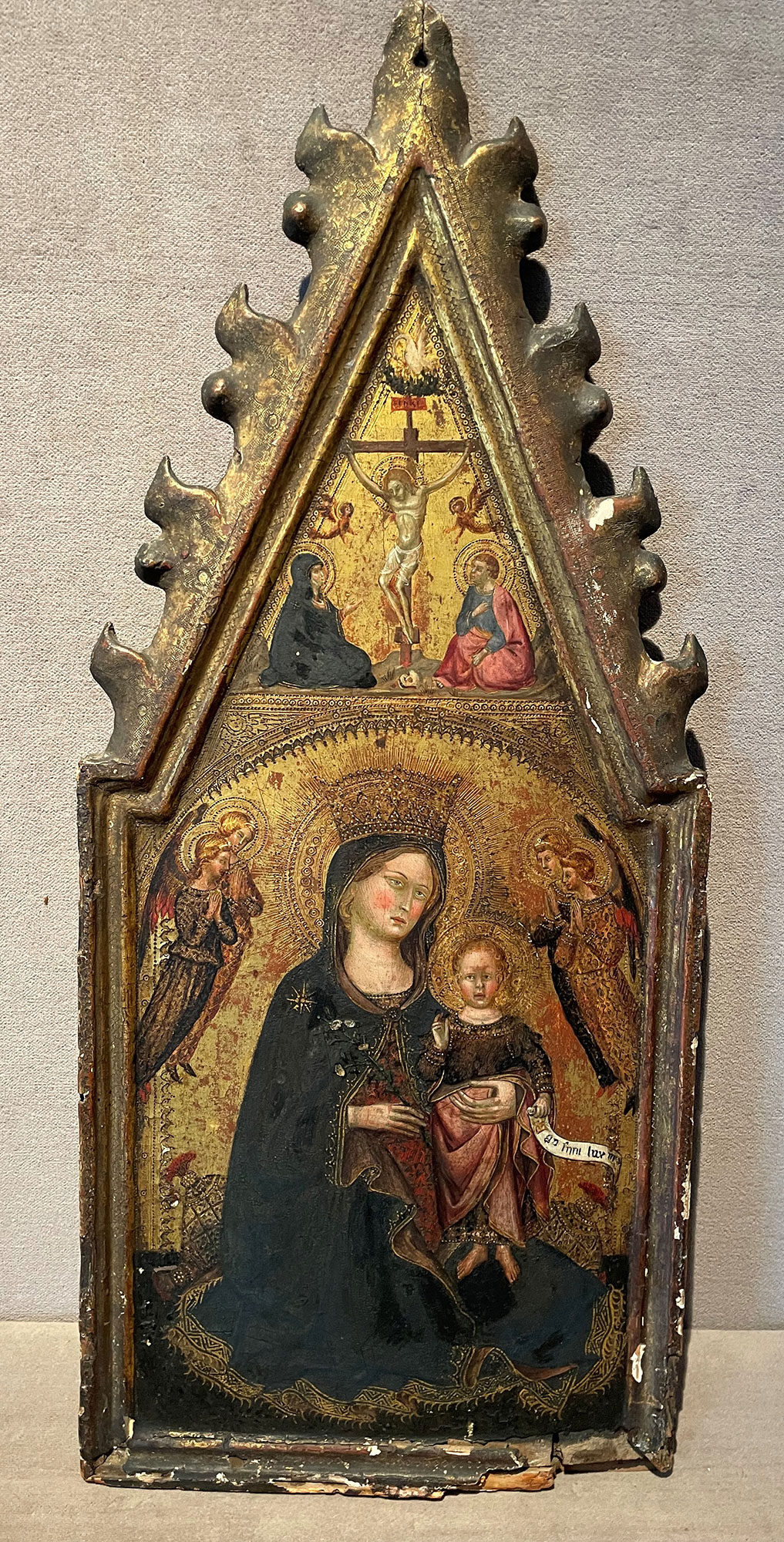
Discussing the panels in Assisi and Avignon, Zeri suggested that a date around 1430 or even a few years earlier would not be inappropriate. Michel Laclotte pointed out convincing analogies between these paintings and a group of narrative panels in Siena and Otterlo (fig. 5), then thought to have formed the predella to the Fondi altarpiece of 1436.5 Palladino accepted both Zeri’s and Laclotte’s observations, noting, however, that the Siena and Otterlo panels must originate from a different commission than that for the Fondi altarpiece, as they also date from the second half of the 1420s.6 Dora Sallay proposed a convincing reconstruction of these panels as part of the predella of the Branchini altarpiece of 1427, without, however, mentioning the Assisi/Avignon triptych.7 For Palladino, the Assisi/Avignon triptych (and, by logical extension, the Yale Virgin) most closely resembles the surviving fragments of Giovanni di Paolo’s first public commission in Siena, the Malavolti (formerly known as Pecci) altarpiece of 1426, now divided among the Prepositura at Castelnuovo Berardenga; the Pinacoteca Nazionale, Siena;8 the Walters Art Museum, Baltimore;9 and the Lindenau-Museum Altenburg, Germany.10 This opinion was seconded recently by Laclotte and Esther Moench.11 It is possible that the triptych is to be dated earlier than either of these two major commissions of 1426 and 1427, but it is certainly later than Giovanni di Paolo’s earliest-known works: the Virgin and Child with Saints Catherine and Dorothy and Two Angels of ca. 1418 (fig. 6) and the marriage box with a Triumph of Venus, dated 1421 (fig. 7).12 Despite a pronounced difference of scale, the closest figural analogies for the triptych occur in the small altarpiece showing Christ Suffering and Christ Triumphant in the Pinacoteca Nazionale, Siena, dated by Sallay simply “before 1426.”13
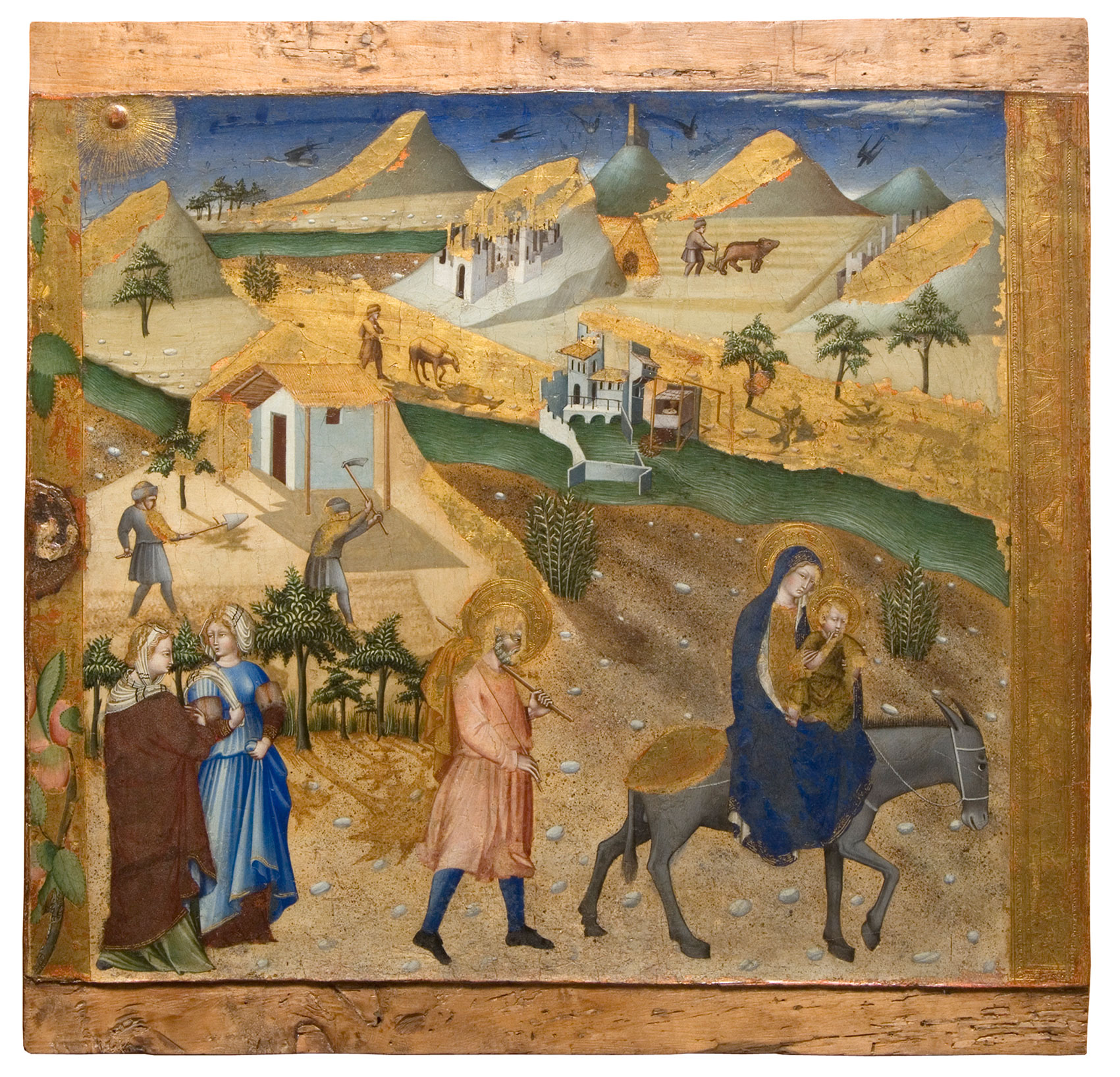
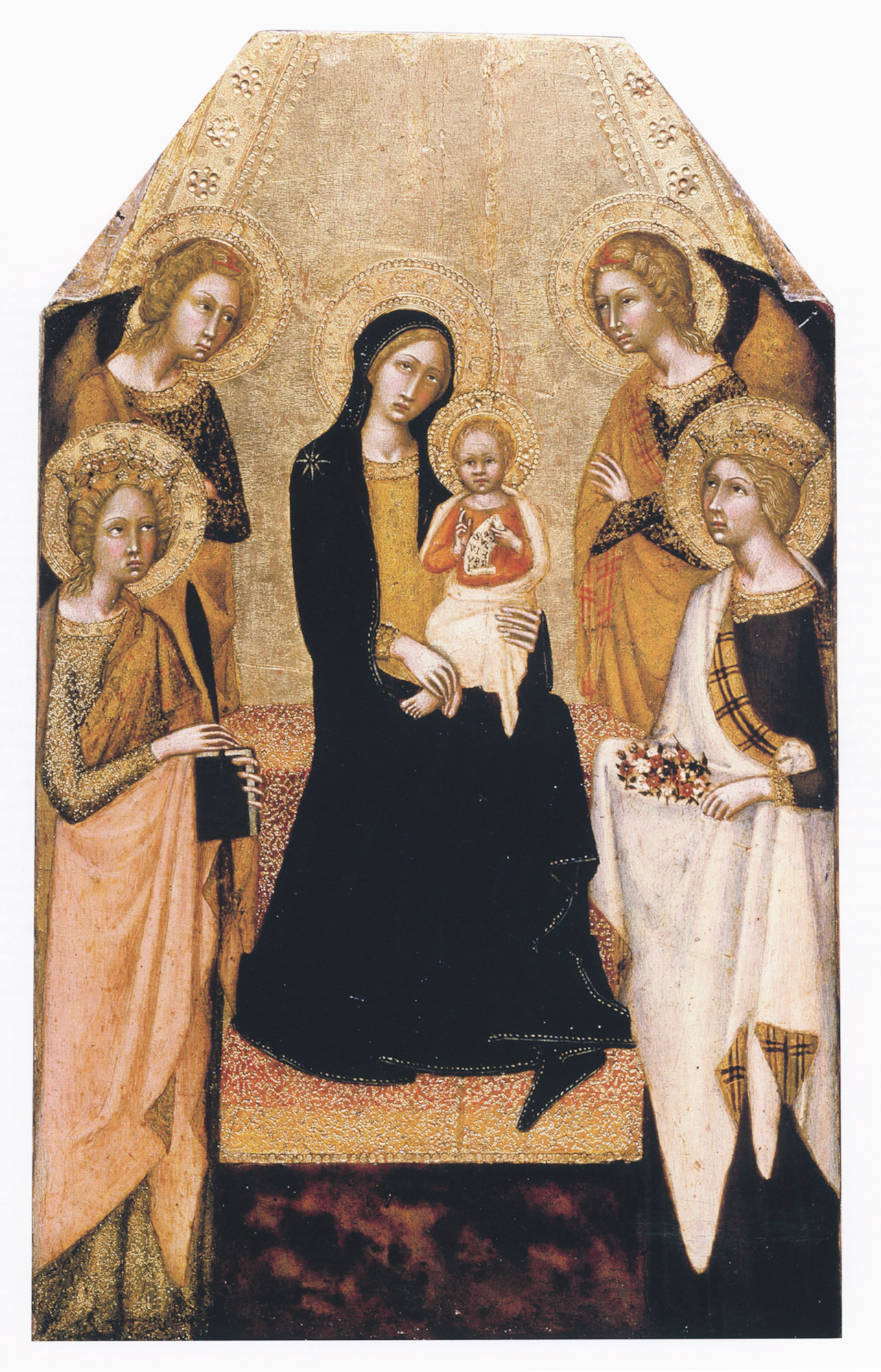
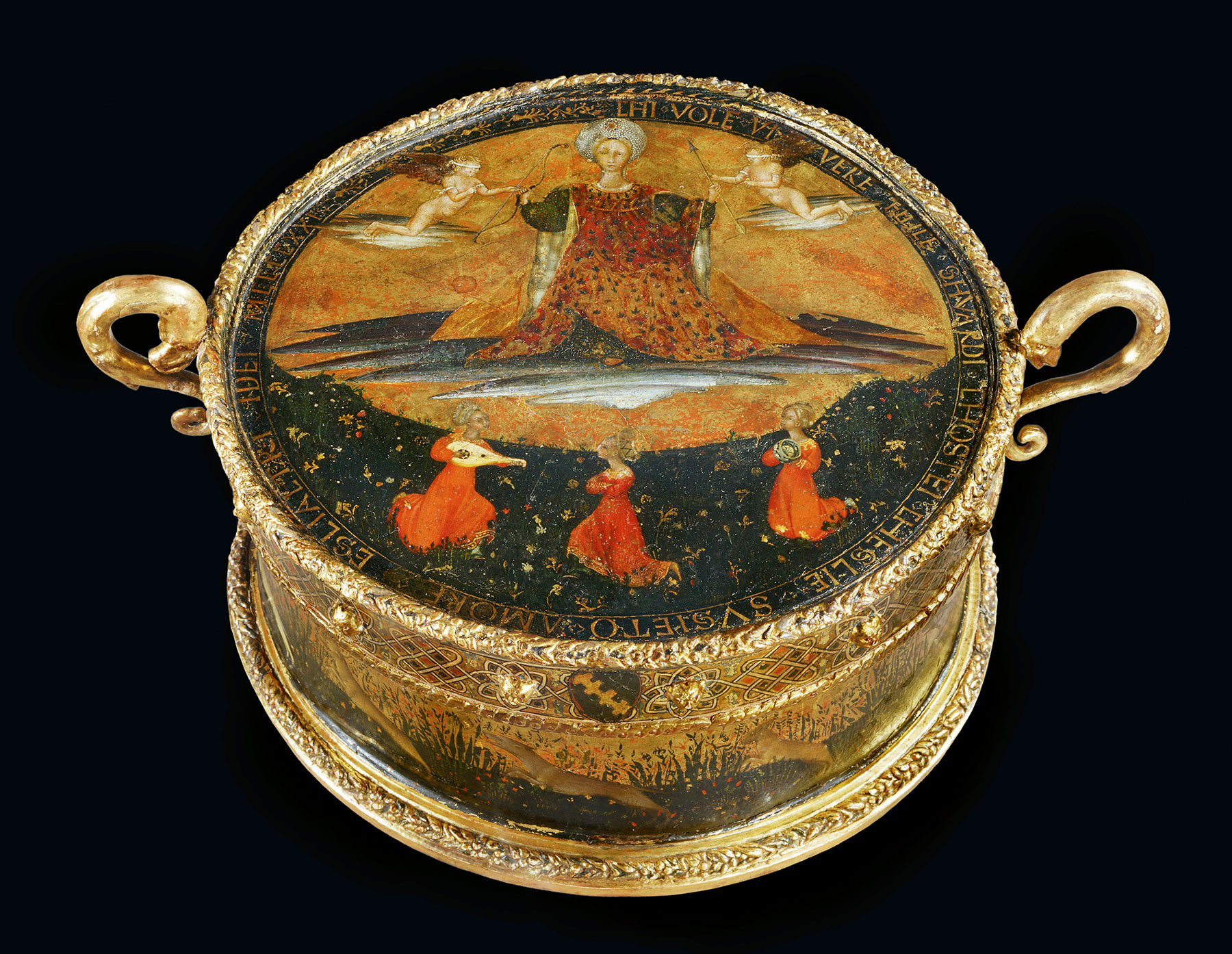
Portable triptychs in Siena from the last third of the trecento and the opening decades of the quattrocento containing an image of Saint Christopher on one wing are common, though most often he is paired on the other wing not with an image of Saint James but rather of Saint Anthony Abbot. Both Saints Christopher and Anthony Abbot were invoked for protection against disease. The latter was known as the healer of men and animals and was the patron of an order of Hospitallers, while an inscription beneath the image of Saint Christopher on a fourteenth-century triptych in the Walters Art Museum, Baltimore,14 where he is paired with a figure of Anthony Abbot, reads, “XPOFORI SANCTI SPETIEM QUICUMQUE TUETUR ILLO NAMQUE DIE NULLO LANGUORE TENETUR” (Whoever contemplates the image of Saint Christopher will not be taken by any illness during that same day). Christopher was also invoked for protection against sudden death and was known as the patron saint of travelers. Saint James, the elder brother of Saint John the Evangelist, was the patron and protector of pilgrims and of travelers in general. He is shown in the Assisi panel (see fig. 2) with his standard attribute of a pilgrim’s staff, a reference to the popularity, since at least the eleventh century, of his shrine at Compostela in Spain, one of the principal pilgrimage centers of Europe. It is also possible that the pairing of these two saints in the Assisi/Avignon triptych has a more specific meaning. One of Giovanni di Paolo’s earliest patrons, Margarita di Branca di Niccolò di Guelfo Branchini, widow of Bartalaccio di Cristoforo Tolomei, founded a chapel in San Domenico in Siena on May 31, 1423, with a dedication to Saints Christopher and James.15 Giovanni di Paolo’s altarpiece for this chapel was completed and signed in 1427, but it is possible that his introduction to the commission may have originated from a far more modest painting made for the donor a few years earlier. —LK
Published References
Laclotte, Michel, and Esther Moench. Peinture italienne: Musée du Petit Palais, Avignon. Paris: Réunion des musées nationaux, 2005., 110, 236; Andrea de Marchi, in Sarti, Giovanni. Entre tradition et modernité: Peinture italienne des XIVe et XVe siècles / From Gothic Tradition to the Renaissance: Italian Painting from the 14th and 15th Centuries. Exh. cat. Paris: Galerie G. Sarti, 2008., 131, 133n6; Dominique Vingtain, in Guiducci, Anna Maria, and Dominique Vingtain, eds. L’héritage artistique de Simone Martini: Avignon–Sienne. Exh. cat. Avignon, France: Petit Palais Diffusion, 2009.; Laurence Kanter, in Kanter, Laurence, and John Marciari. Italian Paintings from the Richard L. Feigen Collection. Exh. cat. New Haven: Yale University Art Gallery, 2010., 98–100, no. 30
Notes
-
Cited in Laclotte, Michel, and Elisabeth Mognetti. Peinture italienne: Musée du Petit Palais, Avignon. Paris: Éditions des Musées nationaux, Palais du Louvre, 1977., 106; and see Zeri, Federico. La collezione Federico Mason Perkins. Turin: Umberto Allemandi, 1988., 106. ↩︎
-
For a graphic reconstruction, see Laclotte, Michel, and Esther Moench. Peinture italienne: Musée du Petit Palais, Avignon. Paris: Réunion des musées nationaux, 2005., 236. ↩︎
-
Inv. no. AC 1996.139.1a–c. ↩︎
-
See F. Dabell, in Gold Backs, 1250–1480. Exh. cat. London: Matthiesen Fine Art, 1996., 111–17. The Los Angeles triptych was exhibited in Siena in 2010 (see Seidel, Max, Francesco Caglioti, Elian Carrara, et al., eds. Le arti a Siena nel primo Rinascimento: Da Jacopo della Quercia a Donatello. Exh. cat. Milan: Federico Motta, 2010., no. E.5); its measurements correspond almost exactly with those proposed for the disassembled triptych reconstructed here. ↩︎
-
Laclotte, Michel, and Elisabeth Mognetti. Peinture italienne: Musée du Petit Palais, Avignon. Paris: Éditions des Musées nationaux, Palais du Louvre, 1977., 106. ↩︎
-
Pia Palladino, in Kanter, Laurence, and Giovanni Morello, eds. The Treasury of Saint Francis of Assisi. Exh. cat. Milan: Electa, 1999., 114. Miklós Boskovits (in Boskovits, Miklós, and David Alan Brown. Italian Paintings of the Fifteenth Century: The Collections of the National Gallery of Art, Systematic Catalogue. Washington, D.C.: National Gallery of Art, 2003., 326, 331n28) also noted that the Siena and Otterlo predella panels must be works of the 1420s. ↩︎
-
Dora Sallay, in Seidel, Max, Francesco Caglioti, Elian Carrara, et al., eds. Le arti a Siena nel primo Rinascimento: Da Jacopo della Quercia a Donatello. Exh. cat. Milan: Federico Motta, 2010., 210–13. ↩︎
-
Inv. nos. 193 and 197. ↩︎
-
Inv. no. 37.489, https://art.thewalters.org/detail/7914/four-panels-from-a-predella/. ↩︎
-
Inv. no. 78. ↩︎
-
Laclotte, Michel, and Esther Moench. Peinture italienne: Musée du Petit Palais, Avignon. Paris: Réunion des musées nationaux, 2005., 110. See also Ada Labriola, in Boskovits, Miklós, and Johannes Tripps, eds. Maestri senesi e toscani nel Lindenau-Museum di Altenburg. Exh. cat. Siena: Protagon, 2008., 145–50; and Sallay, in Seidel, Max, Francesco Caglioti, Elian Carrara, et al., eds. Le arti a Siena nel primo Rinascimento: Da Jacopo della Quercia a Donatello. Exh. cat. Milan: Federico Motta, 2010., 206–9. ↩︎
-
See Andrea De Marchi, in Seidel, Max, Francesco Caglioti, Elian Carrara, et al., eds. Le arti a Siena nel primo Rinascimento: Da Jacopo della Quercia a Donatello. Exh. cat. Milan: Federico Motta, 2010., 198–99; and Dora Sallay, in Seidel, Max, Francesco Caglioti, Elian Carrara, et al., eds. Le arti a Siena nel primo Rinascimento: Da Jacopo della Quercia a Donatello. Exh. cat. Milan: Federico Motta, 2010., 416–17. The small tabernacle at the Musée des Beaux-Arts, Tours, inv. no. 63.2.7, published by Andrea De Marchi, in Seidel, Max, Francesco Caglioti, Elian Carrara, et al., eds. Le arti a Siena nel primo Rinascimento: Da Jacopo della Quercia a Donatello. Exh. cat. Milan: Federico Motta, 2010., 200–201, is not by Giovanni di Paolo and may not be Sienese. ↩︎
-
Inv. no. inv. 212; see Sallay, in Seidel, Max, Francesco Caglioti, Elian Carrara, et al., eds. Le arti a Siena nel primo Rinascimento: Da Jacopo della Quercia a Donatello. Exh. cat. Milan: Federico Motta, 2010., 202–3. ↩︎
-
Inv. no. 37.718; see Zeri, Federico. “Un’Adorazione dei Magi di Vittorio Crivelli.” In Diari di Lavoro, 2:71–75. Turin: Giulio Einaudi, 1976., 1:16. ↩︎
-
See Sallay, in Seidel, Max, Francesco Caglioti, Elian Carrara, et al., eds. Le arti a Siena nel primo Rinascimento: Da Jacopo della Quercia a Donatello. Exh. cat. Milan: Federico Motta, 2010., 210–13. ↩︎